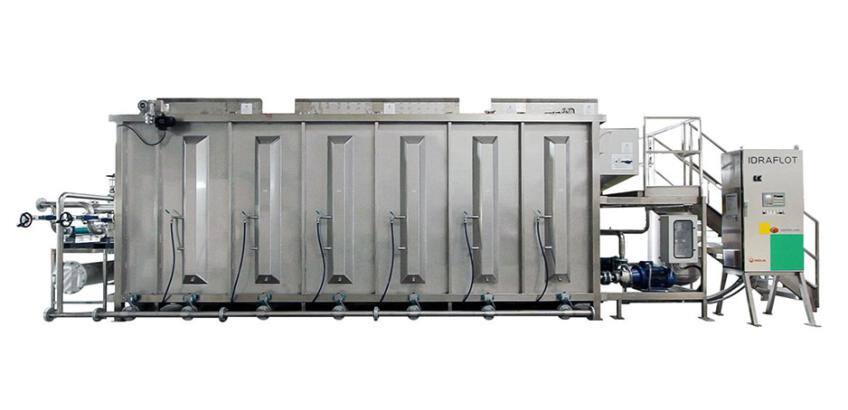My career started as a trainee technical service chemist, I will always remember the fascination when I saw my first Dissolved Air Flotation (DAF) unit in operation. Big fluffy cloud-like ‘flocs’ floating with crystal clear water surrounding them, a remarkable difference from the thick, grey, turbid influent that we were treating. This was my first insight into wastewater treatment processes and since then the technology (and my knowledge and understanding of these processes!) has advanced further with DAF still being frequently used in wastewater treatment applications today.
So, What is Dissolved Air Flotation?
.png?width=523&height=294&name=DAF%20(1).png)
Dissolved Air Floatation (DAF) is a process used widely across a host of industries for the removal of total suspended solids, fats, oils, grease and chemical oxygen demand. It offers enhanced thickening and clarification capabilities within a smaller footprint compared to conventional clarifiers.
DAF works in a simple step-by-step process. The treatment begins with the chemical preparation of the wastewater. First, a coagulant is mixed into the wastewater, triggering the formation of 'pin flocs' from the colloids present in the water. Following the coagulant, a polymer is added to the mixture. This second chemical promotes the development of larger, more stable flocs. The resulting larger flocs serve two crucial purposes: they enhance the overall stability of the formed particles and significantly increase the buoyancy of the flocs, which is essential for the flotation process.
Next, an advanced DAF unit, such as the patented Idraflot system, saturates the water with air under high pressure. When released into the treatment tank, this pressurised water forms microbubbles that attach to suspended solids, causing them to float to the surface.

A distinguishing feature of the Idraflot DAF system is its ability to produce exceptionally small bubbles. These minuscule bubbles adhere more effectively to suspended solids compared to those generated by other flotation systems. This enhanced adherence significantly improves the separation process, making the IDRAFLOT® DAF one of the most efficient flotation options available for wastewater treatment. The system's superior performance in solid-liquid separation underscores its value in various industrial and municipal applications.
The combined action of the chemical treatment and the mixing with the saturated ‘white water’ means that the solids now rise to the surface of the DAF where they are then allowed to partially thicken before being removed from the water by a series of scrapers. The treated wastewater is then discharged to either a secondary treatment process or off-site.
The Benefits of Idraflot
IDRAFLOT® is suitable for a wide range of industries such as:
- Food and beverage,
- Healthcare,
- Pulp and paper,
- Oil and gas,
- Mining,
- Textiles
- Municipal.
Manufactured in corrosion-resistant stainless steel, the number of modules can range from 1 to 12 with a maximum treatment capacity of 480m3 per hour on a single unit, allowing for customisation based on specific needs. For applications requiring higher flow rates or increased loading capacities, additional units can be integrated into the system. This scalability ensures that the Idraflot DAF technology can be adapted to meet a wide range of wastewater treatment demands, from small-scale operations to large industrial facilities.
For a complete solution, we also supply the coagulants and flocculants required for the DAF process. Our water treatment chemicals ensure optimal system performance and provide clients with a comprehensive wastewater treatment package.
Next Steps
Interested in a new, replacement, or additional DAF project? Let's talk. We can guide you through the initial steps and develop a preliminary design for your site. To start, we typically need some basic data. This includes COD, Total Suspended Solids, FOG, flow rate, and a few other core parameters. Don't have this data? No problem. Our analytical services can help you gather the necessary information.
Get in contact, here.